#south africa tour of west indies
Text
0 notes
Text
పాక్ గడ్డపై ఇంగ్లాండ్ టీమ్కి 300 మందితో సెక్యూరిటీ.. హెలికాప్టర్తో పర్యవేక్షణ
పాక్ గడ్డపై ఇంగ్లాండ్ టీమ్కి 300 మందితో సెక్యూరిటీ.. హెలికాప్టర్తో పర్యవేక్షణ
పాకిస్థాన్ గడ్డపై 17 ఏళ్ల తర్వాత ఇంగ్లాండ్ క్రికెట్ టీమ్ మళ్లీ పర్యటిస్తోంది. ఆఖరిగా 2005లో అక్కడ మ్యాచ్లు ఆడిన ఇంగ్లాండ్ టీమ్ సుదీర్ఘ విరామం తర్వాత కరాచీలో అడుగుపెట్టింది. దాంతో ఆ జట్టుకి వీవీఐపీ సెక్యూరిటీని పాకిస్థాన్ క్రికెట్ బోర్డు అందిస్తోంది. 2009లో శ్రీలంక జట్టు ప్రయాణిస్తున్న బస్పై లాహోర్లో దండగులు కాల్పులు జరపగా… అప్పటి నుంచి పాక్లో పర్యటించేందుకు ఇంగ్లాండ్ నిరాకరిస్తూ వచ్చింది.…

View On WordPress
#In 2009#Monitoring by helicopter#Six bullet-proof mini buses have been arranged for the England team to travel#Sri Lanka and other teams did not venture to tour there.#Sri Lankan team&039;s bus was attacked by assailants in Lahore#T20 matches between Pakistan and England from 20th of this month at the National Stadium in Karachi#till last year South Africa#Till this year Australia#West Indies
0 notes
Text
In the summer of 2020, [...] Black Lives Matter protesters tore a statue of 17th-century slave trader Edward Colston from its plinth in the centre of Bristol and rolled it into the harbour. [...] [C]ritics [...] argued that this type of direct action was “erasing history”. Britain’s prime minister at the time, Boris Johnson, claimed that to remove statues of figures like Colston from the public square was “to lie about our history”. Sir Trevor Phillips complained that Britain’s public history was being “erased entirely” [...]. Yet rather than lead us into an era of collective forgetting, the tearing down of Colston’s statue transported his name – and deeds – into the public consciousness.
This week, the renewed attention towards Colston bore fruit when the Guardian revealed that a historian, Brooke Newman, had unearthed a document showing that in 1689, Colston transferred £1,000 of shares in the Royal African Company (RAC) to none other than King William III. The exposure of the extent to which the monarch was financially intertwined with the slave trading company of which Colston was a director does not teach us less about history, it teaches us more.
---
The activities of colonial companies like the RAC, which enjoyed a monopoly over the English trade in slaves from the west African coast, are often presented as distinct from the internal history of the British Isles.
Yes, there may have been the odd massacre performed in the service of British imperialism, but these were the actions of rogue merchants in distant tropical lands, operating far from the watchful eye of Westminster and the living embodiment of British sovereignty, the monarch. This makes it easy to delete the actions of the RAC from the national record: the 84,500 men, women and children who, during Colston’s time with the company, were taken by its ships from their homes in west Africa to suffer a life of slavery in the New World.
A quarter of them would not even survive the journey, so horrific were the conditions aboard Colston’s ships.
---
Yet this separation between internal royal histories and external colonial histories has always been a [hidden] spot in our understanding of the past. Companies like the RAC needed to be granted a royal charter just to exist: they couldn’t be just registered and incorporated like companies today.
And furthermore, as the Guardian’s research has illustrated, there was often a cosy personal connection between the ruling kings and queens of this island and its slave-trading and colonial companies. This extended from James II acting as a governor of the Royal African Company to George II being a shareholder of the South Sea Company, which held the contract to supply enslaved Africans to the Spanish colonies in South America. [...]
---
The new revelations arrive at a difficult time for the monarchy, with the coronation of a new king seeking to shore up the disruption caused by the passing of the long-reigning Elizabeth II. [...] Leading politicians in Australia and Jamaica, countries where the British monarchy traditionally enjoyed a great deal of public support, are now campaigning to follow in the footsteps of Barbados, [...] a step towards the Caribbean island “leaving our colonial past behind”. The rising unpopularity of the British monarchy in the once-reliable British West Indies was made evident by the protests that greeted [...] William and Kate, during their tour of the region last year. [...] The relationship between the British royal family and the former colonies isn’t just a question of symbolism or constitutional law. It is an entry point into a deep and bloody history [...]. It is a history that the lid has only just started to be lifted on.
---
Text by: Kojo Koram. “Those who tore down Colston’s statue helped lead us to the truth about slavery and the monarchy.” The Guardian. 7 April 2023. [Bold emphasis and some paragraph breaks/contractions added by me.]
105 notes
·
View notes
Text
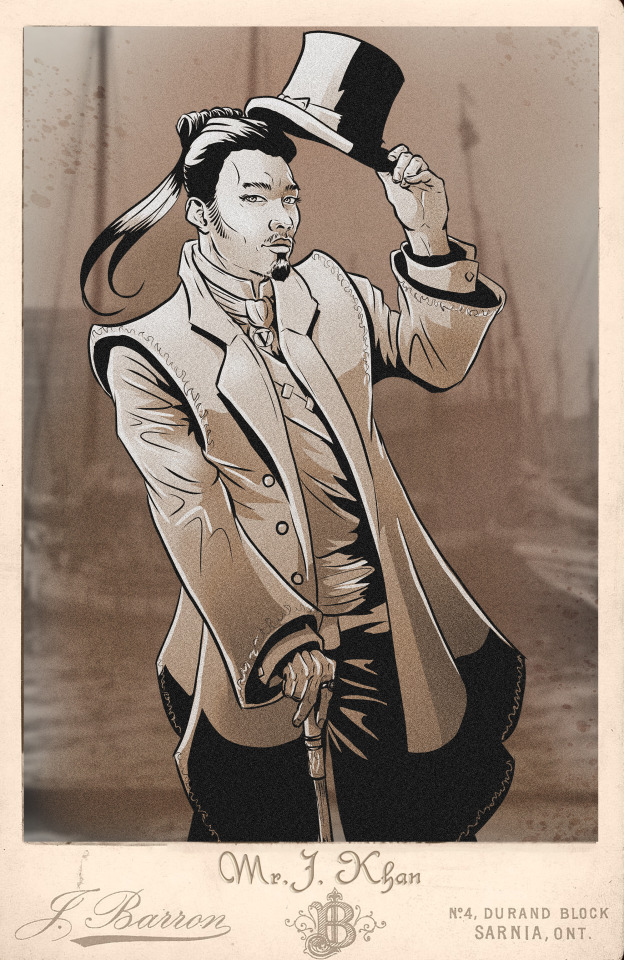
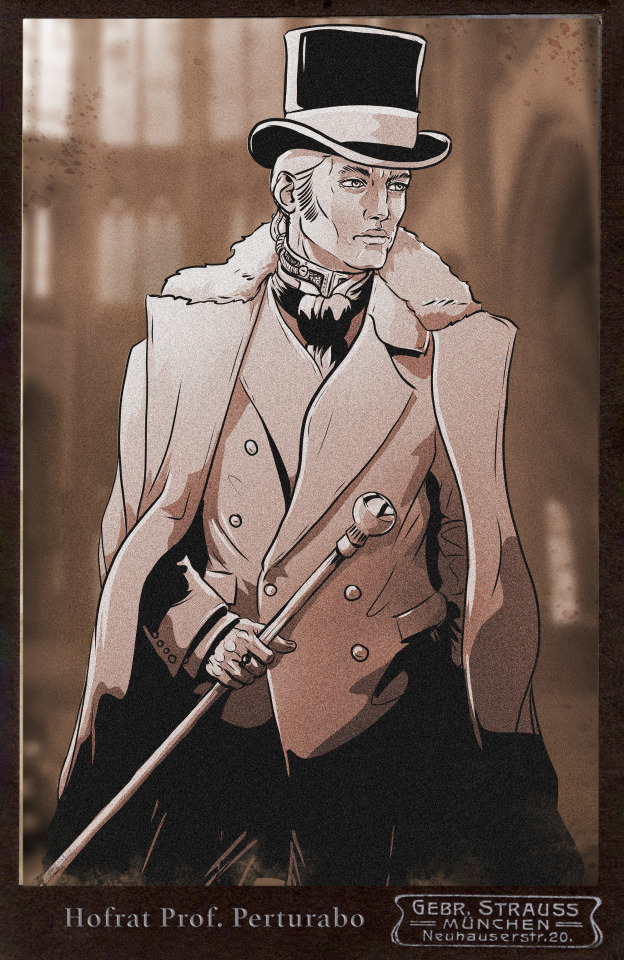
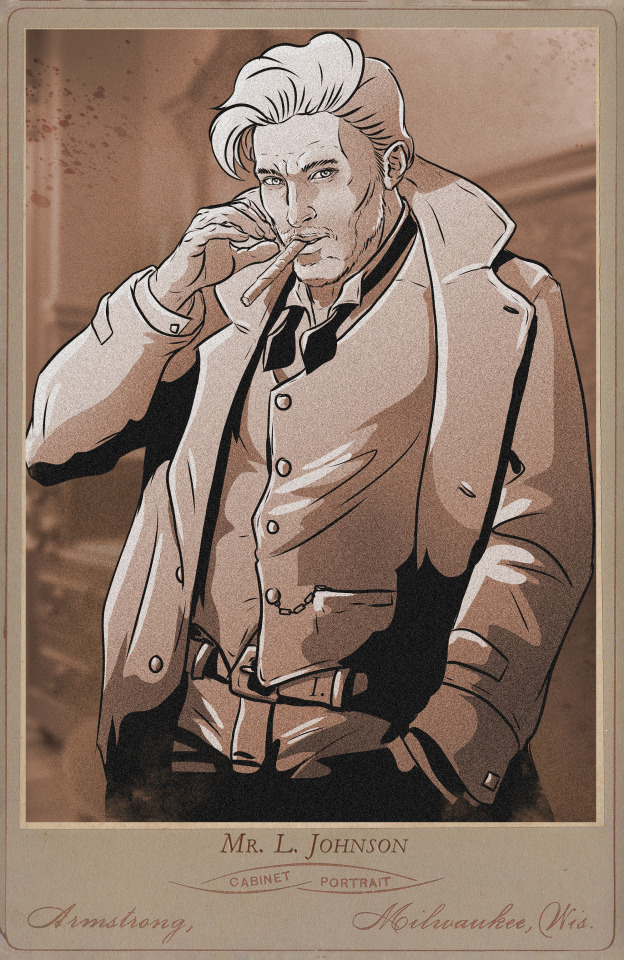

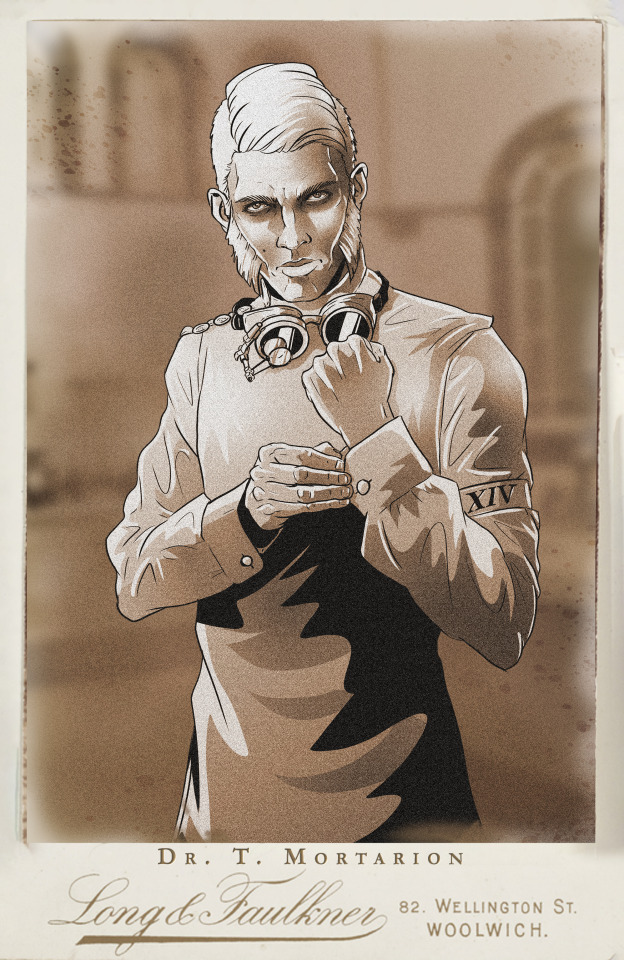
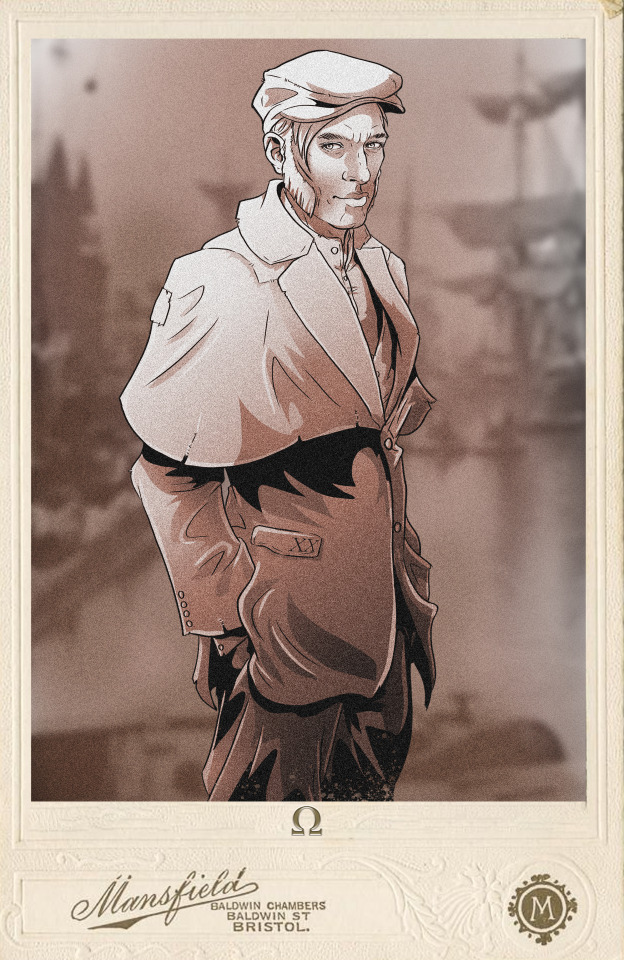
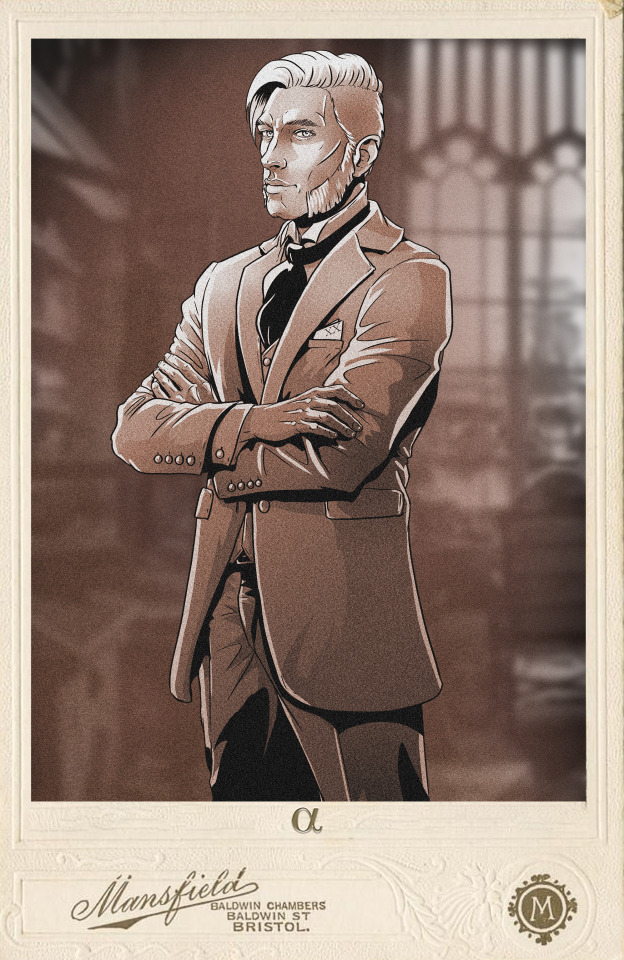
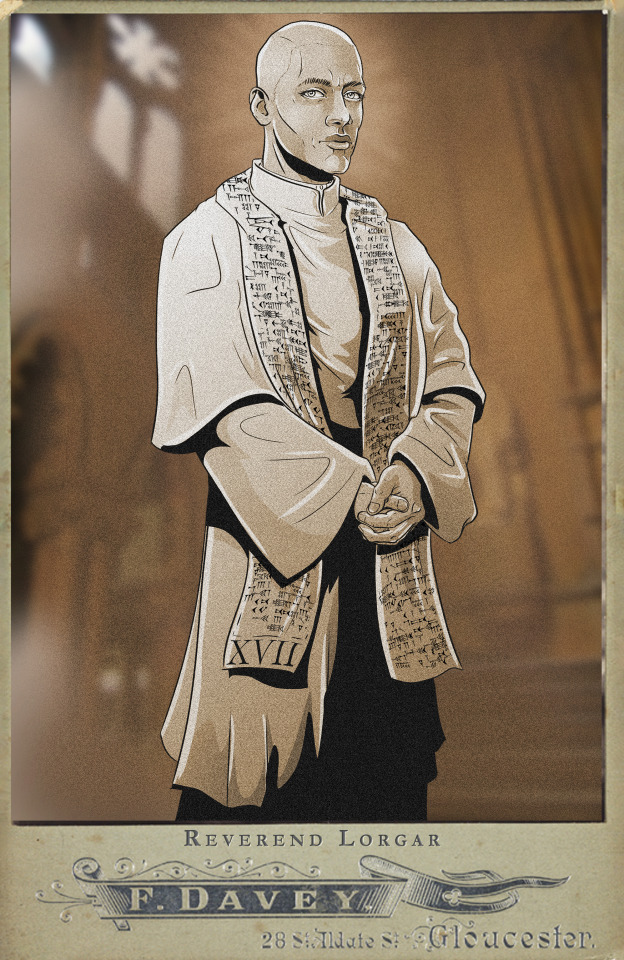
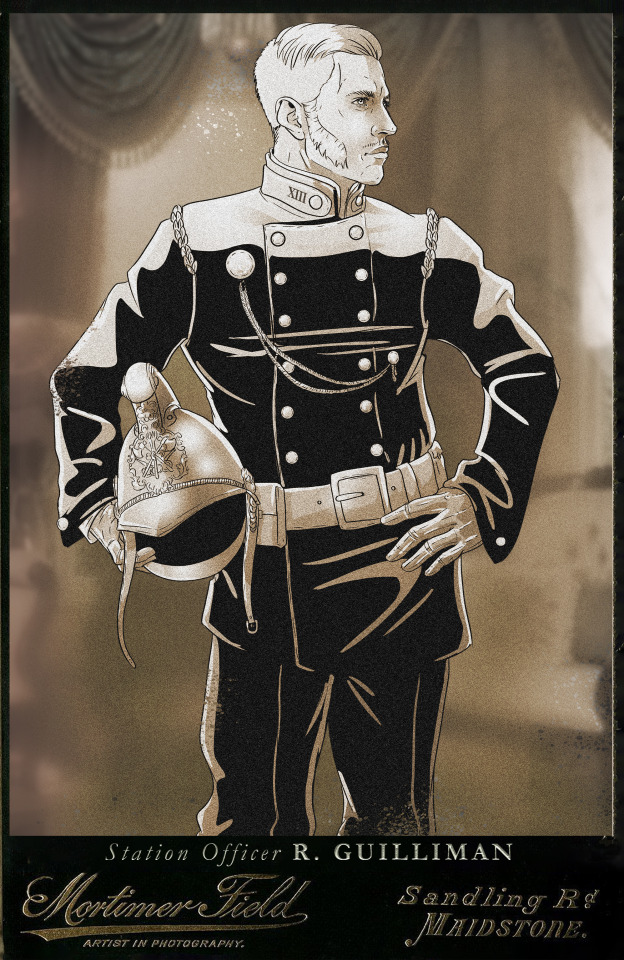

Victorian Warhammer Alternate Universe - Second batch of the Primarchs.
And here are the texts @sonofdorn-vii wrote for them:
(making a cut because very long post)
Guilliman, the fire-chief
Station Officer Guilliman is an exceptional firefighter. A solid rule follower, Young Rob decided not to join his father in the army, instead has devoted himself to helping others. Fire Station Thirteen is run with clockwork efficiency, though his men are occasionally sneered at behind their backs for seeming so eager to please him. When alone, Guilliman laments always feeling late to the party, and wishes perhaps he could be more proactive in preventing disaster from striking in the first place, rather than just cleaning up the mess.
Corvus
Known to the authorities only as 'The Raven', Corvus Corax is a wanted man. A coal miner since early childhood in the deepest pits of Yorkshire, Corvus has seen first hand how the class system benefits the rich at the expense of the working poor. After discussion of forming a workers union lead to the murder of his father at the hands of the mine owner, Corvus vowed that the system would change, even if it must be forced to. Since then, he has committed many acts of sabotage; generating fear and disgust among the richest land owners and is wanted by police forces across the Kingdom
Alpharius/Omegon
Alpharius Omegon is a poor bootblack, plying his trade on the streets of Cardiff. Good at his job; liked, but unnoticed by most of his wealthy patrons, Alpharius has learned that overheard information is often far more valuable than his physical skill for a man who knows how to use it. Alpharius Omegon is also a wealthy shipping magnate, based in Cardiff Docks, who's uncanny knowledge of his competitor's business dealings have often given him an advantage over them in bidding for contracts. Knowing which rival is addicted to chasing the dragon or who has an unhealthy interest in fresh young cadavers can lead to business opportunities of all kinds...
Lorgar
The Very Reverand Lorgar Aurelian is an Anglican minister from the Home Counties. Once a young military padre, he left the service after several tours of Darkest Africa, having seen great and terrible deeds done in the name of the King. His easygoing and approachable manner make him instantly likable, while his small stature leave him unitimidating to those who encounter him. His work with war orphaned boys on the streets of London have earned him many unquestioningly loyal followers, stirred into righteous action by Lorgar's inspiring sermons and prolific writings.
Vulkan
Foreman Victor Vulkan runs one if the many forges in the county of South Yorkshire. His affinity with molten metal has lead him to no small fame across the country as a weapons manufacturer, as well as a significant contributor to the railway network of the Kingdom. Young Vulkan was adopted by his father, a Yorkshire Steelworker, from the West Indies and studied in the Steel City of Sheffield. They also travelled together to Essen in the Ruhrgebiet and as far afield as the Empire of Japan learning new and old smithing techniques. His jovial manner and support of his men and their families lead him to aid in the formation of one of the country's earliest Trade Unions. The colour of his skin, unusual in the Kingdom, has lead less enlightened citizens to be wary of him but his booming laugh and kindly nature immediately puts those he encounters at ease...
Lion
Mr Lionel Johnson hails from the ex colony of North America. His blonde hair, dazzling white smile and genial manner make him a perfect guest at dinner parties this season. When you're noticed by 'The Lion' it feels like the sun is shining on your face, like you're the only one in the room. His tales of the West are fascinating to Europeans, earning him much attention and favour with the stuffy British establishment, however HIS part in these tales is always unclear. He wears a pair of six shooters on his hips and those lucky enough to witness a demonstration are dumbfounded by his superb skill. Some say he is late of the US Cavalry, and learned his trade hunting Natives for sport, some say he's a small town Sheriff, used to being the Law wherever he goes. Where he actually acquired these weapons and the affinity he has with them is a question of much debate in Society, however his real past is currently cloaked in mystery...
Perturabo
Perturabo is a prussian architect of astounding skill. His cathedrals and palaces cover the Kingdom and beyond, preferred of all the aristocracy of Europe. His wonderous creations however belie his cold and calculating mind. His visions, though of great beauty, are the product of his intense desire to be recognised as the best in his field, serving only his own advancement. The artistry involved is merely a tool to be used, a way of gaining recognition. He feels nothing for his creations, most of them he's never seen beyond the drawing board, discarding as many as one in ten as substandard to his exacting specifications. His ultimate goal is unclear, but his need to ingratiate himself with the elite of Europe, by any means necessary, is a powerful motivator...
Khan
Jaghatai Khan claims to have the fastest ships in the known world. Marked with his personal Lightning Sigil, his cutters ship linen from India, ink from China and coffee from the West Indies at record breaking speeds. Using his considerable resources, Jaghatai can import the best feeds and supplements to support his other passion; horse racing. From imbibing ginger to twitches made from whalebone, he'll try anything to make his horses faster. A thoroughbred from his own personal stables, White Scar, will compete against the King's horse, Custodian, at Cheltenham in the spring. Little is known about how a poor boy from the steppes of Asia became one of the most powerful Trade Envoys in the world, but any that meet him are immediately charmed by his amiable nature. Generous with time and coin, the Great Khan, as he's named in quiet whispers, has made quite the impression in Society circles, even catching the eye of a certain notorious Viscount on occasion...
Mortarion
Timothee Mortarion is a respiratory specialist at St Barts in London. After his brother died of complications due to Asthma, young Mortarion dedicated his life to science. Using cutting edge (literally) methods, the serious young doctor has developed techniques using inhalation of various aerosolised substances to strengthen and enhance the lungs of many young homeless patients. His success rate is the cause of some debate in the medical community however, his cures seem to kill as many unfortunates as they save...
I'll repost the first batch with their texts (not all of them have texts, since we started giving them backstories a while after I began drawing. but I'm sure my wonderful wordsmith-friend will write something up for the missing ones, too).
#Warhammer#Alternate Universe#Victorian AU#Victorian Alternate Universe#Primarchs#Horus Heresy#Adeptus astartes#Mortarion#Jaghatai Khan#Perturabo#Lion El'Johnson#Vulkan#Lorgar Aurelian#Lorgar#Alpharius#Omegon#Corvus Corax#Guilliman
221 notes
·
View notes
Photo
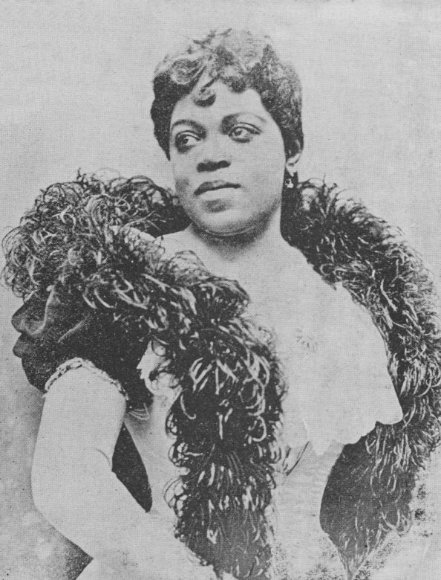

Matilda Sissieretta Joyner Jones, known as Sissieretta Jones, (January 5, 1868 or 1869[1] – June 24, 1933[2]) was an African-American soprano. She sometimes was called “The Black Patti” in reference to Italian opera singerAdelina Patti. Jones’ repertoire included grand opera, light opera, and popular music.[3]
Matilda Sissieretta Joyner was born in Portsmouth, Virginia, United States, to Jeremiah Malachi Joyner, an African Methodist Episcopal minister, and Henrietta Beale.[2] By 1876 her family moved to Providence, Rhode Island,[4]where she began singing at an early age in her father’s Pond Street Baptist Church.[2]
In 1883, Joyner began the formal study of music at the Providence Academy of Music. The same year she married David Richard Jones, a news dealer and hotel bellman. In the late 1880s, Jones was accepted at the New England Conservatory of Music.[1] On October 29, 1885, Jones gave a solo performance in Providence as an opening act to a production of Richard IIIput on by John A. Arneaux‘s theatre troupe.[5] In 1887, she performed at Boston’s Music Hall before an audience of 5,000.[2]
Jones made her New York debut on April 5, 1888, at Steinway Hall.[1] During a performance at Wallack’s Theater in New York, Jones came to the attention of Adelina Patti’s manager, who recommended that Jones tour the West Indies with the Fisk Jubilee Singers.[2] Jones made successful tours of the Caribbean in 1888 and 1892.[1]
In February 1892, Jones performed at the White House for PresidentBenjamin Harrison.[2] She eventually sang for four consecutive presidents — Harrison, Grover Cleveland, William McKinley, and Theodore Roosevelt— and the British royal family.[1][2][3]
Jones performed at the Grand Negro Jubilee at New York’s Madison Square Garden in April 1892 before an audience of 75,000. She sang the song “Swanee River” and selections from La traviata.[3] She was so popular that she was invited to perform at the Pittsburgh Exposition (1892) and the World’s Columbian Exposition in Chicago (1893).[4]
In June 1892, Jones became the first African-American to sing at the Music Hall in New York (renamed Carnegie Hall the following year).[1][7] Among the selections in her program were Charles Gounod‘s “Ave Maria” and Giuseppe Verdi‘s “Sempre libera” (from La traviata).[1] The New York Echowrote of her performance at the Music Hall: “If Mme Jones is not the equal of Adelina Patti, she at least can come nearer it than anything the American public has heard. Her notes are as clear as a mockingbird’s and her annunciation perfect.”[1] On June 8, 1892, her career elevated beyond primary ethnic communities, and was furthered when she received a contract, with the possibility of a two-year extension, for $150 per week (plus expenses) with Mayor James B. Pond, who had meaningful affiliations to many authors and musicians.[8] The company Troubadours made an important statement about the capabilities of black performers, that besides minstrelsy, there were other areas of genre and style.[8]
In 1893, Jones met composer Antonín Dvořák, and in January 1894 she performed parts of his Symphony No. 9 at Madison Square Garden. Dvořák wrote a solo part for Jones.[1]
Jones met with international success. Besides the United States and the West Indies, Jones toured in South America, Australia, India, and southern Africa.[1] During a European tour in 1895 and 1896, Jones performed in London, Paris, Berlin, Cologne, Munich, Milan, and Saint Petersburg.[9]
In 1896, Jones returned to Providence to care for her mother, who had become ill.[1] Jones found that access to most American classical concert halls was limited by racism. She formed the Black Patti Troubadours (later renamed the Black Patti Musical Comedy Company), a musical and acrobatic act made up of 40 jugglers, comedians, dancers and a chorus of 40 trained singers.[2] The Indianapolis Freeman reviewed the “Black Patti Troubadours” with the following: “The rendition which she and the entire company give of this reportorial opera selection is said to be incomparably grand. Not only is the solo singing of the highest order, but the choruses are rendered with a spirit and musical finish which never fail to excite genuine enthusiasm.[10]
The revue paired Jones with rising vaudeville composers Bob Cole and Billy Johnson. The show consisted of a musical skit, followed by a series of short songs and acrobatic performances. During the final third of each show, Jones performed arias and operatic excerpts.[9] The revue provided Jones with a comfortable income, reportedly in excess of $20,000 per year. She led the company with reassurance of a forty-week season that would give her a sustainable income, guaranteed lodging in a well-appointed and stylish Pullman car, and the ability to sing opera and operetta excerpts in the final section of the show.[8] This allowed Jones to be the highest paid African American performer of her time.[8] Jones sung passionately and pursued her career choice of opera and different repertory regardless to her lack of audience attendance.[8] For more than two decades, Jones remained the star of the Famous Troubadours, while they graciously toured every season and established their popularity in the principal cities of the United States and Canada.[11] Although their eventual fame and international tours collected many audiences, they began with a “free-for-all” variety production with plenty of “low” comedy, song and dance, and no pretense of a coherent story line.[12]
Several members of the troupe, such as Bert Williams, went on to become famous.[1] April 1908, at the Avenue Theatre in Louisville, Kentucky, an audience made up mostly of whites (segregated seating was still prevalent), accepted Madam ‘Patti’ after singing ‘My Old Kentucky Home’ with much respect and admiration, and marked “the first time that a colored performer received a bouquet at the theatre in this city”.[12] For almost ten years, racial segregation had kept Jones from the mainstream opera platform, but by singing selections from operas within the context of a hard-traveling minstrel and variety show, she was still able to utilize her gifted voice, that people of all races loved.[12] The Black Patti Troubadours reveled in vernacular music and dance.[12]
Jones retired from performing in 1915 because her mother fell ill, so she moved back to Rhode Island to take care of her. For more than two decades, Jones remained the star of the Famous Troubadours, while they graciously toured every season and established their popularity in the principal cities of the United States and Canada.[12] She devoted the remainder of her life to her church and to caring for her mother. Jones was forced to sell most of her property to survive.[1][2] She died in poverty on June 24, 1933 from cancer. She is buried in her hometown at Grace Church Cemetery.[2]
In 2013 Jones was inducted into the Rhode Island Music Hall of Fame.[13]
Source: https://en.wikipedia.org/wiki/Matilda_Sissieretta_Joyner_Jones
Photos from Wiki Commons
#sissieretta black patti jones#blackherstory#black womens history#lightopera#popularmusic#grandopera
11 notes
·
View notes
Text
Matilda Sissieretta Joyner Jones (January 5, 1868 or 1869[1] – June 24, 1933)[2] was an American soprano. She sometimes was called "The Black Patti" in reference to Italian opera singer Adelina Patti.[3] Jones' repertoire included grand opera, light opera, and popular music.[3] Trained at the Providence Academy of Music and the New England Conservatory of Music,[1] Jones made her New York City debut in 1888 at Steinway Hall,[1] and four years later she performed at the White House for President Benjamin Harrison.[2] She sang for four consecutive presidents and the British royal family,[1][2][3] and was met with international success. Besides the United States and the West Indies, Jones toured in South America, Australia, India, southern Africa,[1] and Europe.[4]
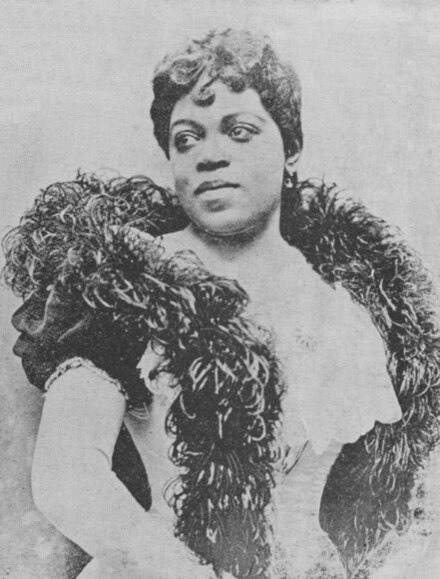
1 note
·
View note
Photo

Dennis Vincent Brutus (November 28, 1924 – December 26, 2009) was a South African activist, educator, journalist, and poet known for his campaign to have South Africa banned from the Olympic Games due to its controversial racial policy of apartheid. Born in Salisbury, Southern Rhodesia, he was of indigenous Khoi, Dutch, French, English, German and Malaysian ancestry. His parents moved back home to Port Elizabeth when he was aged four, and he was classified under South Africa's apartheid racial code as "coloured". He was a graduate of the University of Fort Hare (BA) and of the University of the Witwatersrand, where he studied law. He taught English and Afrikaans at several high schools in South Africa but was dismissed for his vocal criticism of apartheid. He served on the faculty of the University of Denver, Northwestern University, and the University of Pittsburgh and was a Professor Emeritus from the last institution. He was awarded the Lifetime Honorary Award by the South African Department of Arts and Culture for his lifelong dedication to African and world poetry and literary arts. He was an activist against the apartheid government of South Africa. He learned politics in the Trotskyist movement of the Eastern Cape. He was motivated by the unfairness of selections for athletic teams. He joined the Anti-Coloured Affairs Department organization, a Trotskyist group that organized against the Coloured Affairs Department, which was an attempt by the government to institutionalize divisions between blacks and coloureds. He formed the South African Sports Association, and as Secretary was strongly opposed to a proposed cricket tour by Frank Worrell’s West Indies to South Africa in 1959, leading a successful campaign to have it canceled. He was a co-founder of the South African Non-Racial Olympic Committee, an organization that would be influential in the banning of apartheid-era South Africa from the Olympics. He was banned for his political activities as part of SANROC. #africanhistory365 #africanexcellence https://www.instagram.com/p/ClgPegvLt8d/?igshid=NGJjMDIxMWI=
3 notes
·
View notes
Text
How to save cricket as an international sport
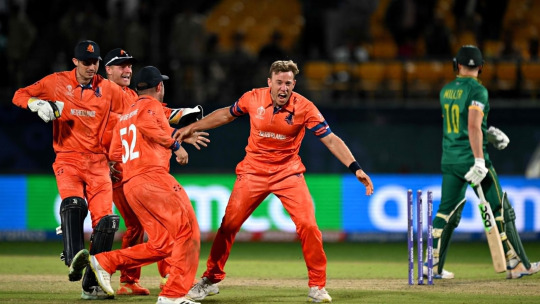
I've kept an eye on international-level cricket for some years now, and I understand it as such that there's been concerns about… pretty much everything, really. Ranging from Test matches not being profitable, team suspensions, multiple wars, associate members feeling they'll never get anywhere, etc.
My Dandelion Sprout Report will be short, but concise and solid:
Make Netherlands a full member, and give them access (if they don't already have) to players from non-Sint Maarten Dutch Caribbean.
Split the West Indies into 2 full members, a "North West Indies" and a "South West Indies". To remain competitive, the north can absorb Bermuda, while the south can absorb Turks And Caicos and Suriname. At this point there'll be 14 full members.
The only factor left that prevents Netherlands from full status, is a lack of competent arenas, as they literally play their international matches on a lawn in a park. Amsterdam Olympic Stadium would very narrowly fit an international-sized cricket field, provided artifical grass is placed on most of the running track.
Europe only has one cricket field with seating for more than 30,000, while India and Australia can easily fill 110,000 on a good day. Sure the situation is not any better in South Africa or the Caribbean, but it's getting a little awkward in England in particular. Generally the sport needs larger stadiums almost everywhere.
Establish limits in Test Matches for how long an innings can last, and limits for wasting time to aim for draws. Let's say that if time runs out on day 5 while the batting team's innings have lasted more than 6 hours, that batting team has lost.
If the first 2 days rain out, or days 2 and 3 rain out while the first team's first inning has not ended, the match will become "1 innings per team" instead of 2 innings.
If days 1-4 rain out, the match will revert to an ODI with full Test credentials.
If a team has a single batting inning that last 3 days (72 hours) in real time without rained-out days and without being all out, that team automatically wins.
Don't force teams to play a Test world tour if they don't want to. Just make the Test World Championship a straight knockout tournament over the course of a year or less.
India and Pakistan refusing to play each other outside the World Cup and Asia Cup, has got a bit weird. If they can play there, oftentimes if the cups are in each others' countries, then they should stop being so hostile to each other that they can't play Test matches at each other either.
0 notes
Link
Ishan Kishan and Rishabh Pant in the Spotlight Ishan Kishan... #usa #uk
0 notes
Text
England Are Hopeful Of Archer Playing T20 World Cup In June, Says Rob Key

T20 World Cup: England men’s managing director Rob Key is hopeful that fast-bowler Jofra Archer will be available to play in the 2024 Men’s T20 World Cup, happening in the USA and West Indies from June 1-29.
Archer has been out of competitive cricket since May last year after suffering the recurrence of a long-standing right elbow injury while playing for Mumbai Indians in the 2023 IPL. After missing out on Ashes and ODI World Cup, Archer was seen training with the England squad during their white-ball tour of the West Indies in December last year.
England will be defending the Men’s T20 World Cup they won in 2022 in Australia through their campaign opener against Scotland in Barbados on June 4. "Our plan is the T20 World Cup, building him up slowly. I saw him bowl in the Caribbean and it was like he'd never been away," said Key to the BBC's Tailenders podcast.
He also revealed that Archer was keen on playing IPL 2024, but wasn’t given the go-ahead for it. "I don't want to get back to this thing where he plays and then goes down again. He wanted to play in the IPL, but we said not this time. Hopefully the years he has missed he can add to the end of his career. He is such a talent."
Key, the former England cricketer, also called for dedicated windows to be made in the cricketing calendar for Test cricket in order to protect the oldest format of the game. His views come in the light of South Africa sending a weakened Test squad to New Zealand as the two-match series in February clashes with second season of SA20.
"Test cricket needs to have windows. There was a two-month window for the Ashes last summer - that could be one. There could be one at Christmas. There are all of these franchise competitions, like the IPL, and there is a global white-ball competition every year. Test cricket needs a window where you can't play anything else."
"The rest of us - England, Australia, India and the International Cricket Council in particular - need to look after the other countries. We have to stop being snobby about Test cricket. We have this view that you can't play Test cricket unless you have played 150 red-ball games, or play in a certain way. No, just pick the most talented players," he concluded.
Read the full article
#InternationalCricketCouncil#JofraArcher#MumbaiIndians#NewZealand#ODIWorldCup#RobKey#SouthAfrica#T20WorldCup#WestIndies
0 notes
Text
How Cricket become an internationally popular sport
Cricket is one of the oldest sports and the second most popular game in the world after soccer.
Cricket is particulary popular in india, Australia, England, its birthplace, Bangladesh, South Africa, Pakistan, Sri Lanka, and New Zealand.
There is also growing popularity in the West Indies, Netherlands, United Arab Emirates, Zimbabwe, and many other parts of the world.
But how did cricket become such an internationally popular sport? That is what we will explore in this article.
The Early Days Of Cricket
Cricket is believed to have first started, possibly as early as the Saxon times, on woodland fields in the Weald area, southeast of England. However, it wasn't until 1611 that there was a record of adults engaging in the sport.
A decade later, in 1709, the first village cricket teams were formed and were given county names. The game slowly gained popularity in England, and in 1744, the first laws of the game were drawn up.
The laws were later amended in 1774 by "Star and Garter Club" following the LBW and the introduction of the maximum bat width and the third stump.
The Star and Garter Club and club members are the founders of the famous Marylebone Cricket Club, who are the current custodians of the cricket laws.
The MCC was formed in 1787 and has since made numerous revisions to the cricket codes.
Throughout the 18th century, cricket became very popular in England. The village teams graduated to county teams playing organized matches against each other. These matches attracted significantly larger crowds.
The Spread Of Cricket To The Rest Of The World
Cricket was introduced to the rest of the world as early as the 17th century by English colonists, sailors, traders, soldiers, settlers, and missionaries. North America was the first to be introduced to the game in the late 17th century.
In the 18th century, cricket spread to the West Indies, India, New Zealand, and Australia also because of the colonization that was taking place at the time. The Caribbean and South Africa, and other parts of the world were introduced to the game in the 19th century.
The first record of cricket being played in the USA was in 1709, but the first international match was in September 1844 between Canada and the US. By mid of the civil war, cricket had been played in nearly 22 states.
It is also believed that international tours by cricket professionals also popularised the game in different parts of the world.
There were several tours, notably, the English tour to Canada and the US in 1859, the tour to Australia in 1861-1862, and the famous Australia tour to England in 1877 for the first-ever Test match between the two, which resulted in the oldest cricket rivalry of all times.
Similar tours led by Lord Hawke and his team of amateurs headed to South Africa, India, New Zealand, Australia, and West India between 1892 to 1903 also played a huge role in making cricket popular.
The Birth Of Women's Cricket
The first reference of women's cricket was in 1745, a match between Bramley and Hambledon villages in Surrey, and in 1811, the first county match was played between the maids of Hampshire and Surrey.
Because of how popular women's cricket grew, it necessitated the need for a governing body, and in 1887, the Women's Cricket Club was formed in Yorkshire. A few decades later, the Women's Cricket Association was then formed in 1926.
Shortly thereafter, in 1934, the first international Test match for women was set. The match was between England and Australia in which England emerged as the winner. Since then, there have been countless women's test matches.
Surprising to many, women's cricket was quickly adopted around the world. By 1958, the International Women's Cricket Council was formed to promote international tours and provide a liaison between countries on matters pertaining to the game.
The founding nations were, of course, England and Australia, Holland, New Zealand, and South Africa. More members joined over the years, and more associations set base in West Indies (1973), India (1973), Ireland (1982), Pakistan and Sri Lanka (1979), and Denmark (1983).
The Women's World Cup was thereafter introduced in 1973 in England following a conversation between millionaire businessman Jack Hayward and the then England captain Rachael Heyhoe-Flint.
Hayward agreed to fund the match, which was played at the Lords. England won the historic ODI match by eight wickets against Australia.
Due to a lack of resources and money, women's cricket had to be merged with men's cricket in the 1990s, and in 2005, the International Women's Cricket Council (IWCC) agreed to officially surrender control of the women's games to the ICC.
This meant more funds and resources could flow into women's cricket. And with better facilities and more money, more financial opportunities opened up. It wasn't long before the results of the merger were seen.
In 2014, professional contracts for women cricket players were awarded for the first time.
Why Is Cricket Not At The Olympic Games?
Even though cricket is the second most played in the world, it has only made one appearance at the Olympic games. That was in 1900 when England scored against France.
Several things can be attributed to its absence, but the major contention has always been the suitable format. Is it the ODI, T10, or T20? Discussions are, however, underway on the format to be adopted for the Olympics.
There are hopes that the game will feature in the 2028 Olympics set to be held in Los Angeles. The ICC has so far set up a committee to see to it. Crickets at the Olympics will be a major boost to the game's popularity.
What Makes Cricket Popular?
It's no secret that cricket is one of the world's most popular games. It has an insanely passionate fan base that keeps growing by the day. It is watched and played by basically everyone - rich or poor, young and older. It's no wonder it has a very diverse fanbase.
The sport has a healthy presence globally but a stronger dominance in England, India, Australia, South Africa, Bangladesh, West Indies, and Pakistan. In India, for instance, the game is watched by 93% of sports viewers. Matches in India often attract hundreds of millions of viewers.
You wouldn't believe how adored cricket players are. Players like Steve Smith, Sunil Gavaskar, Ben Stokes, AB de Villers, Rahul Dravid, and others have caught the attention of an immensely wide audience. These cricketers are treated as demigods and are an inspiration to many young players.
One of the main reasons why cricket is popular is that it's such an engaging game both to watch and play.
Cricket betting sites have also provided another boost to the game's popularity, especially in India, where cricket is beyond popular. It's almost fanaticism. In addition, it has enabled cricket fans to earn huge amounts of money just by supporting their favorite teams.
The Future of Cricket
First off, it looks like cricket may be featured in the 2028 Olympic games set to be held in Los Angeles. If not, there will be another chance for cricket again in 2032.
Women's cricket is also much more likely to flourish. The first-ever Women's IPL set for 2023 will establish the future for women's cricket as the best cricketers worldwide will gather to compete.
It also looks like there will be two IPLs in the future. According to Ravi Shastri, the former Indian coach, two IPLs every year might be inevitable.
As the T10 continues to grow, there is fear that the popularity of ODI’s is decreasing and may even vanish in the next decade. Players like Moeeb Ali, Usman Khawaja, and others have spoken of the impending threat that may face the ODIs.
Conclusion
First played in the late 16th century in southeast England, cricket has steadily risen over the centuries to become the world's second most popular game after soccer.
It hasn't been all rosy, but the love of the game has made it possible. So many advancements to the game's formats and codes have been made, in an effort to keep cricket updated according to our present time.
The future of cricket around the world is bright, but uncertain. Cricket is the most popular sport in many fast-growing countries such as India, Pakistan and Bangladesh.
Will cricket make it to the Olympics and reach a wider audience than ever before? It remains to be seen, but no matter what happens, there is no doubt that cricket has a bright future ahead.
1 note
·
View note
Text
West Indies beat England in a T20I series led by Shai Hope
West Indies won their third straight T20 international series in 2023, as they prepare to co-host the World Cup for the shortest format in June.
West Indies beat England by four wickets and won the T20I series 3-2 because to Shai Hope’s unbeaten 43. England were bowled out for 132 in the decider, and while the West Indies never got into a groove, Hope held their response together and then won the game with a booming six over extra-cover off the second ball of the final over. West Indies won their third straight T20 international series in 2023, as they prepare to co-host the World Cup for the shortest format in June.

It was a sad finale to the mini-tour for England, who had already lost the 50-over series in the Caribbean 2-1.
The low-scoring game contrasted sharply with England’s team-record 267 on Tuesday, but with the conditions favoring the spinners, West Indies were able to add to their T20i series victories over South Africa and India.
The Brian Lara Academy’s surface aided spinners, and slow left-armer Gudakesh Motie took full advantage, scooping up three wickets for 24 runs in four overs.
Akeal Hosein, the West Indies’ other left-arm orthodox spinner, contributed two for 20 in four overs as the hosts limited England to the lowest mark recorded in the series.
Buttler was dismissed for 11 after he went outside the off-stump and attempted to turn seamer Jason Holder down the leg-side but was caught by Oshane Thomas.
Hosein next bowled Jacks with a magnificent delivery before Motie got a huge turn and won the reward wicket of Phil Salt (38).
Salt had produced quick century in both of England’s last two games as they rallied to tie the series at 2-2.
Moeen Ali was aggressive before being caught by a teamwork catch with Andre Russell sending the ball to skipper Rovman Powell as he moved towards the boundary rope.
Sam Curran was caught by Sherfane Rutherford off Holder with three balls remained in England’s 20-over innings.
The home side’s reply got off to a fast start, with 20 off the first two overs before Brandon King was bowled by Topley, and there was optimism for England when Woakes bowled Nichola Pooran.
But Sherfane Rutherford (30) and Hope put up a 41-run stand that helped England apply late pressure after Rashid removed Rutherford and Powell was bowled by Topley in the 17th over.
Sam Curran, the West Indies’ left-arm seamer, delivered an outstanding penultimate over, dismissing Andre Russell and giving only two runs to leave the West Indies needing nine runs off the final over.
0 notes
Text
captain of Team India KL Rahul is keeping things ‘Klassy’ ahead of the South Africa series
The captain of the Indian cricket team, KL Rahul, is gearing up for the upcoming South Africa tour with unparalleled dedication, leaving cricket enthusiasts in awe of his commitment to fitness and preparation. Through a series of social media posts, fans got a glimpse into his rigorous workout routine, showcasing the hard work he’s putting into conditioning and strength training. One of the videos of KL Rahul practicing on the net has gone viral.
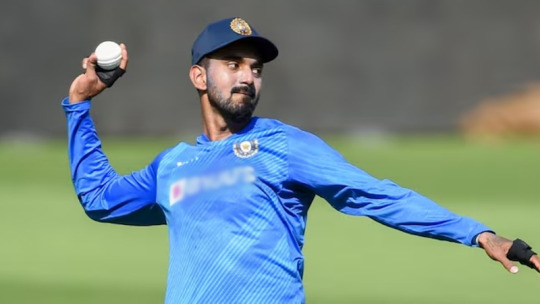
While KL Rahul won’t be part of the T20 squad for the upcoming series against South Africa, he’s set to lead the Indian team in the One Day Internationals and play a pivotal role in the Test series. The month-long tour, starting on December 10, holds immense significance as Team India strives to hone its skills ahead of the T20 World Cup scheduled in the United States and West Indies next year.
0 notes
Text
100 off 40 balls - Glenn Maxwell rewrites history books with fastest ton in ODI Cricket World Cup


Australia star Glenn Maxwell rewrote the historical past books when he scored an ODI century off simply 40 balls towards the Netherlands within the Cricket World Cup match in New Delhi on Wednesday. In a supreme show of power-hitting, Maxwell tore the Netherlands bowling to pieces. Glenn Maxwell broke the record for the quickest century in an ODI Cricket World Cup set by Aiden Markram (49 balls), which was hit forward of the 2023 version in South Africa.
It's the fourth-fastest century within the ODI format, bested by South Africa's AB de Villiers in simply 31 balls towards the West Indies in 2015. Maxwell's effort is the quickest century by an Australian in ODIs.
"Feeling nice, I wasn't feeling nicely, I wasn't anticipating an excessive amount of immediately, and my head was clear. When Davy and Greaney acquired out, I needed to choose myself up," Maxwell stated after his supreme effort.
"The patio was good. Even when they hit the wicket, I feel I've got sufficient time to go after it. And once they bowl quickly, my palms should be fast. Simply attempt to get past it normally. The infield. They have been excellent (Netherlands fielding); they saved sure boundaries within the first 25 overs. It was a tricky outfield, and so they did very nicely. The ball appears to be touring right here; hopefully we are able to get by the highest order and put strain on their center order. Additionally, underneath run-rate strain It is good to have the child right here; it has been a very long time."
Glenn Maxwell scored the quickest World Cup century, whereas David Warner hit his second consecutive century to take Australia to 399 for 8 towards the Netherlands on Wednesday. Maxwell (106 off 44 balls) blew away the Dutch assault to deliver up his century in simply 40 balls, bettering South Africa's Aiden Markram, who scored 106 off 49 balls towards Sri Lanka on the identical floor on 7 October.
Maxwell hit 9 fours and eight sixes in his whirlwind knock. Maxwell reached 50 runs off 27 balls within the forty seventh over. He then took 13 extra balls to achieve triple figures within the forty ninth over. Maxwell was outraged, as have been Paul van Meekeren, Bas de Liede and Logan van Beek.
Warner scored 104 off 93 balls after Australia gained the toss and elected to bat.
Steve Smith additionally scored a superb 71 off 68 balls, whereas Marnus Labuschagne scored 62 off 47 balls.
Logan van Beek (4/74) and Bass de Lied (2/115) shared six wickets between them.
Australia beat Pakistan of their final match.
Subjects lined on this article
#balls #Glenn #Maxwell #rewrites #historical past #books #quickest #ton #ODI #Cricket #World #Cup
Read the full article
1 note
·
View note
Photo
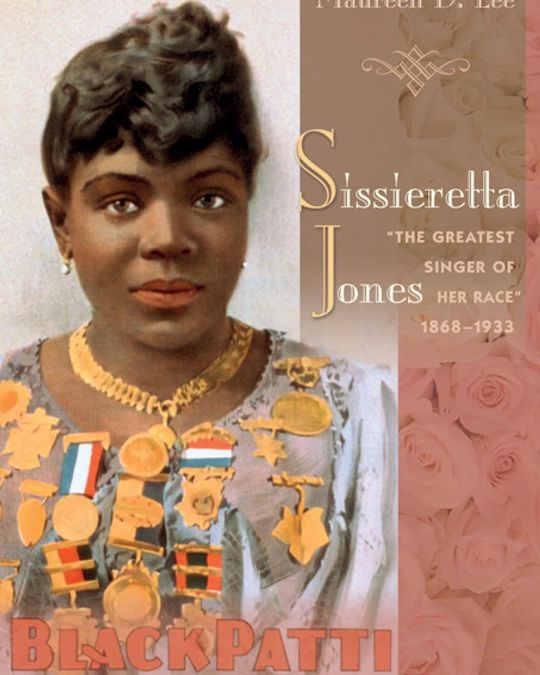
Matilda Sissieretta Joyner Jones, known as Sissieretta Jones, (January 5, 1868, or 1869– June 24, 1933) was a soprano. She sometimes was called "The Black Patti" by Italian opera singer Adelina Patti. Her repertoire included grand opera, light opera, and popular music. Trained at the Providence Academy of Music and the New England Conservatory of Music, she made her NY debut in 1888 at Steinway Hall, and four years later she performed at the White House for President Benjamin Harrison. She sang for four consecutive presidents and the British royal family and met with international success. Besides the US and the West Indies, she toured South America, Australia, India, Southern Africa, and Europe. She was born in Portsmouth, Virginia to Jeremiah Malachi Joyner, an AME minister, and Henrietta Beale, a singer in a church choir and washerwoman. Her father had formerly been enslaved but was educated and literate. She married David Richard Jones (1883-1899), a news dealer and hotel bellman. He served as her first manager. In 1915, her mother fell ill, she retired from performing to take care of her. She devoted the remainder of her life to her church and to caring for her mother, taking in homeless children, and caring for her two adopted children. The highest-paid African-American performer of her time, later in her career she founded the Black Patti Troubadours, a musical and acrobatic act made up of 40 jugglers, comedians, dancers, and a chorus of 40 trained singers. She remained the star of the Famous Troubadours for around two decades while they established their popularity in the principal cities of the US and Canada, she retired from performing in 1915. In 2013 she was inducted into the Rhode Island Music Hall of Fame. #africanhistory365 #africanexcellence https://www.instagram.com/p/CnCGa_HLqfH/?igshid=NGJjMDIxMWI=
2 notes
·
View notes